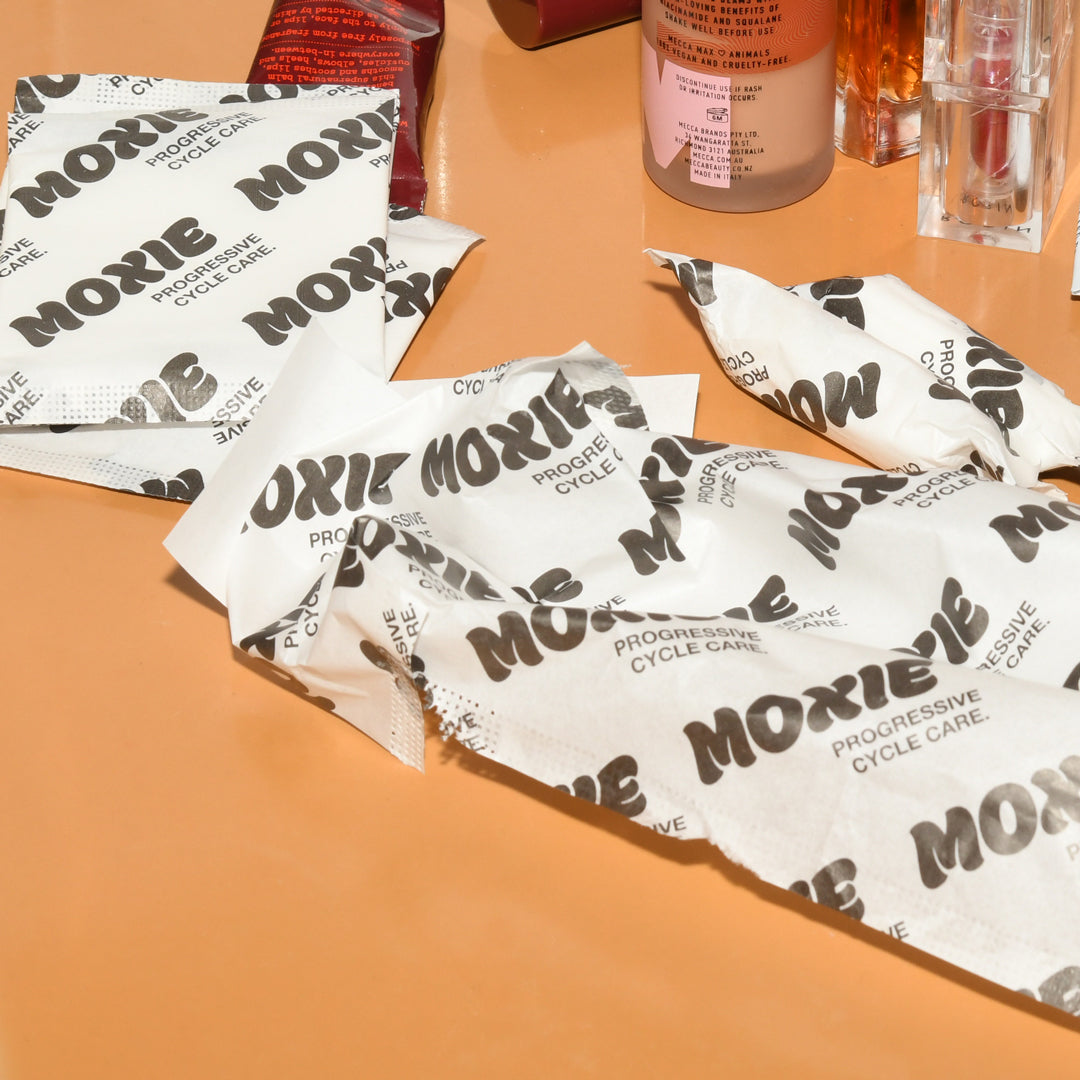How to strengthen your pelvic floor: the best kegel exercises.

Photo by Cora Pursley via Dupe.
Pelvic floor exercises might not be the first thing that comes to mind when you think about health and wellness, but trust us, they're worth the attention. Whether you've ha a vaginal delivery and the muscles down there aren't as strong as they used to be, or have sneezed a little too hard and have experienced an unexpected leak; or, if you just want to stay on top of your intimate health (we should all be doing this, tbh), these simple exercises can make a world of difference. Strengthening your pelvic floor can help with everything from better bladder control, to feeling more comfortable during your period, to experiencing a better sex life.
The best part about pelvic floor exercises (a.k.a 'Kegel exercises') is that you can do them anywhere, anytime, and you don't have to go to the gym. Ready to find out how to get those muscles in shape?
WHAT ARE PELVIC FLOOR MUSCLES AND WHY ARE THEY IMPORTANT?
The pelvic floor is a group of muscles that stretches like a hammock across the base of your pelvis. These muscles support key organs like the bladder, uterus, and rectum. Weak pelvic floor muscles can lead to issues like incontinence, pelvic organ prolapse, or reduced sexual sensation, as well as difficulty with keeping your tampons or period cups in place (as your muscles are too weak to help hold them in).
Strengthening these muscles through Kegel exercises can improve bladder control, enhance sexual health, and even ease discomfort during your period. If you've ever experienced a sneeze-induced leak or struggled with post-birth recovery, pelvic floor exercises can be a game changer.
HOW TO FIND AND ACTIVATE YOUR PELVIC FLOOR MUSCLES.
Before diving into pelvic floor exercises, it’s important to understand where they are on your body and to properly activate the right muscles. An easy way to identify your pelvic floor muscles is by trying to stop urination mid-flow - those are the muscles you want to engage when doing your exercises. (Side note: you don't want to actually be doing your Kegels whilst you're peeing, as this can confuse your bladder).
When you're ready to start your exercises, contract your pelvic floor muscles as if you’re trying to hold in urine, hold for a few seconds, and then relax your muscles down there. The sensation is quite low in the vaginal area, if we had to describe it - be sure not to engage surrounding muscles like your abs or glutes during this process.
BEST TECHNIQUES FOR EFFECTIVE KEGEL EXERCISES.
Once you've identified your pelvic floor muscles, it’s time to put them to work. To perform a Kegel exercise, tighten your pelvic floor muscles, hold for 3 - 5 seconds, then relax for the same amount of time. Aim to do 10 - 15 repetitions, working up to longer holds and more sets as your muscles strengthen. Consistency is key, so try to make Kegels a part of your daily routine. You can discreetly do them while sitting at your desk, driving, or even watching TV. The great thing about Kegels is that they’re portable, so to speak (where you go, they go!), and no one will ever know you’re doing them.
HOW PELVIC FLOOR EXERCISES CAN HELP PREVENT INCONTINENCE AND PROLAPSE.
Many women experience incontinence (up to 38% of Australian women), especially post-birth or as we age. Incontinence occurs when weak pelvic floor muscles can’t adequately support the bladder, leading to leaks when we cough, sneeze, or even exercise. Pelvic organ prolapse, which happens when pelvic organs drop due to weak support, is another common issue that pelvic floor exercises can help prevent. By regularly performing Kegel exercises, you can strengthen these muscles, helping to reduce the risk of both incontinence and prolapse, and improve your overall quality of life.
INCORPORATING PELVIC FLOOR EXERCISES INTO YOUR WELLNESS ROUTINE.
The beauty of pelvic floor exercises is that they can be done anywhere, anytime, making them an easy addition to your daily wellness routine. Whether you're working on syncing your cycle, managing period symptoms, or simply maintaining your overall health, incorporating Kegels can be a powerful habit. Set a reminder to do your exercises during specific times of the day, like while brushing your teeth or during your commute. The key is consistency, and the rewards - a stronger pelvic floor, better bladder control, and improved sexual health - are well worth the effort.
PELVIC FLOOR TIGHTNESS: HOW TO IDENTIFY AND TREAT HYPERTONIC MUSCLES.
Did you know that your pelvic floor can be too tight? This condition, sometimes called pelvic floor hypertonicity, can lead to discomfort, pain during sex, or even difficulty emptying your bladder. In this case, Kegel exercises might not be the best solution. Instead, relaxation techniques, deep breathing, and sometimes physical therapy are recommended to help release tension. If you suspect your pelvic floor is overly tight, it's important to consult a specialist, as they can guide you on how to properly relax those muscles and restore balance.
WHEN TO SEE A DOCTOR FOR PELVIC FLOOR PROBLEMS.
While pelvic floor exercises are highly beneficial, there are times when it's best to seek medical advice. If you're experiencing persistent issues like incontinence that doesn’t improve, feelings of heaviness or pressure in the pelvic region, or if you're worried about potential pelvic organ prolapse (or anything relating to your intimate health at all), it’s best to consult a healthcare professional. Also, if you experience any pain during or after Kegel exercises, or if you’re unsure whether you're engaging the right muscles, a pelvic floor physiotherapist can help offer guidance. Seeking help early can prevent more serious issues down the line.
FINAL THOUGHTS
Taking care of your pelvic floor is just another way to keep everything feeling good and working as it should down there - whether that means fewer surprise leaks or a little more confidence in the bedroom. Adding these exercises to your daily routine can make a real difference, but if something feels off - like unusual symptoms, worries about prolapse, or signs of an overly tight pelvic floor - it’s worth chatting with a doctor or pelvic floor specialist. They’ll help you figure out the best next steps and keep things on track. Remember, if in doubt, always get checked out.
*A PSA about this piece: Remember, the info you see here is intended to inform and educate only, and does not constitute medical advice, nor should it repalce a personalised diagnosis from your own medical practitioner. If you have any concerns about your health, please see your Doctor.



